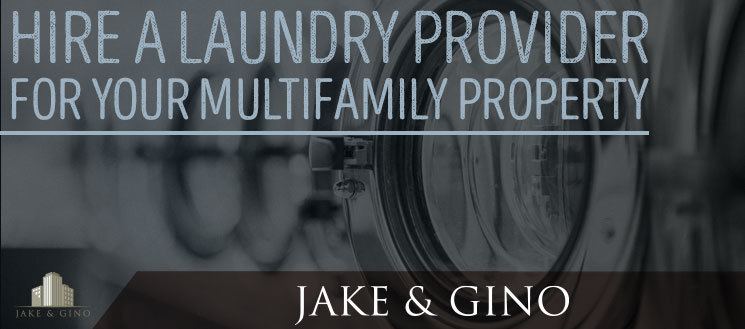
Why You Need To Hire A Laundry Provider For Your Multifamily Property
64 Unit Case Study: “Twin Oaks”
In this article, I have teamed up with Jake & Gino team member and laundry expert John Steinhofer, who has been in the laundry field for the past ten years, and is currently a multifamily laundry specialist with Caldwell & Gregory. It is our goal to convince investors to hire a laundry provider for their laundry needs so that they can focus on delivering superior customer service, while maximizing the revenue from their laundry operations. We will begin by discussing the benefits of hiring a laundry provider, then transition to the general rules of thumb, and finally provide you with our current case study.
The first and loudest complaint I receive from fellow investors is that they have to share the revenue with someone else. That may be true, but, if done properly, you may be splitting more revenue while providing a terrific amenity to tenants.
So what are the benefits?
- New equipment: Commercial laundry machines are meant to last a long time, but like anything else, if you do not take care of them, they will deteriorate much quicker. When taking over a property, such as our sixty four unit Twin Oaks complex, the quickest way to get a quick face lift is to receive new machines from the laundry company.
The machines at Twin Oaks were old and outdated, and we were able to add the perceived value to tenants by replacing them with brand new machines. Remember, washing machines are personal to tenants. Would you want to wash your clothes in an old, outdated dirty machine? I didn’t think so!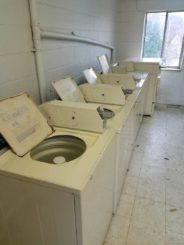

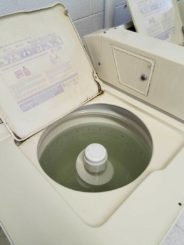

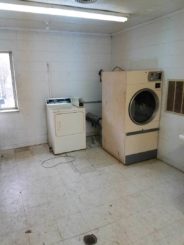



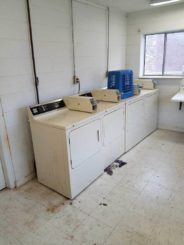

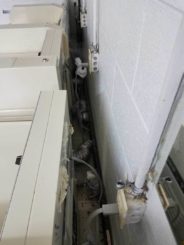

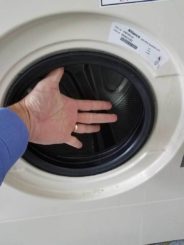



- Properly serviced: If they are not in good condition, as was the case at Twin Oaks, (water in two tubs, dryers too hot to touch, loud noises emanating from the machines), it is time to call in a professional. We were able to shift the focus of our maintenance crew from laundry machines, to turning units that were in total disrepair, and servicing the existing tenants. We were able to perform more maintenance requests, and as a result, we were able to satisfy our clients and offer terrific customer service. If the machines are running properly, you can put your focus on your tenants. No more maintenance techs running to the hardware store to buy a part for the washing machine.
- Tenant retention: You want to create a true amenity for your resident, and added value to your property, and this can be done rather quickly. If ONE resident moves out because of laundry, (believe me, it happens) how much does it cost to turn over the unit?
- Increase revenue/usage: New machines and the new technology warrant a price increase. They also bring in new usage, tenants will now trust machines, and the machines use less water, thus reducing your utility cost. At Twin Oaks, we had fifteen plus year old machines, and half of the machines were not functioning properly. With our makeover, you will see the difference in total usage, and even if we don’t increase the properties overall revenue from laundry, we are satisfying residents, and will reduce turnover due to providing a needed amenity.
- Receive bonus: Laundry providers will offer bonuses to apartment owners to sign a contract. This is a double win. First of all, owners do not have to expend capital to buy new machines. Secondly, operators can utilize this capital on other renovations throughout the property. On a few of our properties, we’ve even sold the old machines on Craig’s list and used the money to upgrade the laundry room.Now that we have laid out all the benefits of hiring a laundry provider, here are several rules of thumb when assessing laundry usage and signing on the dotted line.
1.How many apartments will each machine serve?
In John’s fifteen years of experience, there is a general starting point that he uses, as far as how many machines should be used at a complex. For every 25 units with washer/dryer connections, you want 1 washer/dryer set. For every 10 units without connections, you want 1 washer/dryer set. This figure can be affected by certain factors, such as: various demographics, having more one bedroom apartments than two bedroom apartments, and the availability of laundromats. So, if you have 100 units, 40-1 beds with no hookups, and 60-2 beds with hookups, you would start at 6 washers and 6 dryers, and then look at the tenant profile. What is the make up? Family, elderly, college kids? This is where John comes in and advises you on the optimum number.
2.How many loads per week per apartment?
This is one of the single most important factors. If we look at Twin Oaks, with no washer/dryer connections and no nearby laundromat, what can we estimate the usage to be? Will each apartment do one load a week, or possibly two?
Twin Oaks collected approximately $180 a month gross collections at $2.50 a load (washer & dryer).
- Let’s have some fun.
I’ll bet you guessed 1-2 loads a week for each apartment, on average. Let’s use 1.5.
1.5 x $2.50 = $3.75 per apartment x 64 units = $240 per week x 4 = $960 per month!!!
Say you are getting a 50/50 revenue split with your provider, your revenue potential just went from $180 to $480 a month!!! That is without increasing the price! Um, how much capital did you outlay? None!
3.What is the revenue split with provider?
Your focus should be on usage numbers, not “split” with a provider. Now, can you get a better split? Maybe. If your focus is one-tracked (a.k.a. “how much money can we get”), and not on satisfying tenants, you will never maximize your revenue over the term of the lease. 40% from one provider may very well be more than 50% from another. Find a professional you can trust and discuss options. There are pros and cons to all systems. Find one that is best for each complex separately. Every asset is treated differently EVERY TIME. Start with getting a copy of your lease, and total collections for the year. Know the price of a load, and start there.
4.What is the length of contract?
Generally speaking, the longer the lease, the better offer you get. Think of your how long you plan to hold, 1-3-5-7 years…more? When a provider bids a complex, they look at projected revenue, and HOW MUCH the owner can afford to pay and be profitable. It is a finite number at that time. So if you take bonus, you lose monthly revenue and vice versa. Think of it as a lump sum of money. How do you want to distribute it over time? However, it costs money to pay you upfront, so the more you take, the less you get overall. This is just a preferred general rule I would go by as an owner.
In general, most laundry companies like seven years as a minimum. There can be times they will do five years or less, but you are not getting the best revenue split, such as you would with the seven-year timeline. Always ask for a five, seven and a ten year quote.
5.What is the cost per load?
We need to look at local laundromats: What do they charge? What kind of pay platform do they have? Is it safe? What are the hours? What specials do they run? Not only are you competing with an apartment complex down the road, you are competing with these businesses as well. You have to beat their price! Make it worthwhile for your tenants to stay on your property. In some cases, reducing price will increase overall revenue. Don’t be afraid to visit your competition to see what they are charging.
6.What is the typical bonus offered to the owner?
This was touched on above. There is no such thing as dollar amount per door, or “we need this much to keep the room open”. Just make sure to ask for a bonus from your provider.
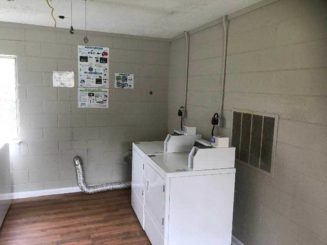

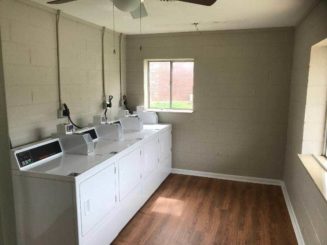

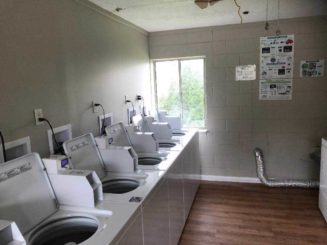





Let’s touch on the problems that we experienced at Twin Oaks:
1.Two Laundry rooms:
At Twin Oaks, there were a number of issues. First there were 10 sets of machines. That would be great if there were one hundred apartments, but we only have sixty-four. There are also two laundry rooms, and each laundry room was incurring costs (heat, A/C, electric). Our first question was “Can we close a room and still make money and satisfy residents?” In this case, the property is small enough that it would affect a few of the residents, but as we turned over units, and they utilized the nice room we created, it would not affect the performance in the long run.
2.Horrendous sales numbers:
The second question is, “What are the gross collections, and how many of the units are doing laundry?” Well, we found out that there were only twenty-two units doing 1.5 loads a week on average. A laundry provider wants to be able to get close to 1.5 to 2 cycles per machine per day. These machines are geared for 10,000 turns. We want to get the most out of each machine.
Currently, usage tells us that with $360 gross at $2.50 a load = 144 loads x 2 = 288 total cycles of washer and dryer per month. So, that means that with 20 machines, you get 288/30.42 Days = 9.467 turns per day on 20 machines which is .473 turns per machine per day! What a waste of machines.
Keep in mind, more capital spent by a provider, in turn, means less revenue there is for the property. Some providers base their value on how many machines they have out there. Some base their value on profitability. Would it matter to you if you had 10 buildings and zero profit? Or would you rather have 2 with tremendous margins? So, a company may structure the deal differently than a “50/50 split.” Just make sure you look at the big picture.
3.Old, obsolete, dangerous machines:
There is a reason why the tenants were not utilizing the laundry room. The machines were old, dangerous and some of them were not working.
4.Very little usage by tenants:
The tenants just weren’t utilizing the amenity, and it was evident based on the current sales figures.
5.Outdated laundry rooms:
Not only were the machines dangerous and outdated, the laundry rooms were in horrendous shape, as well.
John and I sat down right after we closed on the property to devise a plan of attack to address all of the problems.
- Cut down to one laundry room instead of two.
- Install six new washers and dryers.
- Introduce credit card processing in addition to coin operated machines.
- Remodel and repaint the laundry room.
- Install a card entry to make the laundry room safer.
These renovations have just been completed, and I will provide you with financial numbers over the next six months so that we can analyze our performance to see if we made a wise investment.
Additional Read: Tenant laundry with a multifamily laundry service with John Steinhofer
If you would like to connect with John and start a conversation to see if he can add value to your laundry operations, he can be reached at :jsteinhofer@caldwellandgregory.com
If you want more information on how to work with us, please reach out to our community director Josh Roosen at:
josh@jakeandgino.com or visit our website:
He will be happy to spend time with you to see if we can add value to your multifamily investing business.






